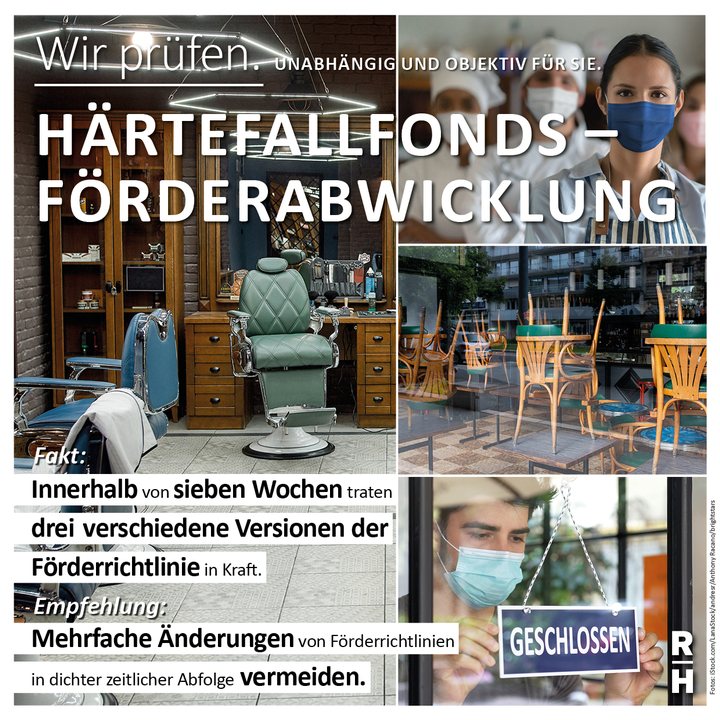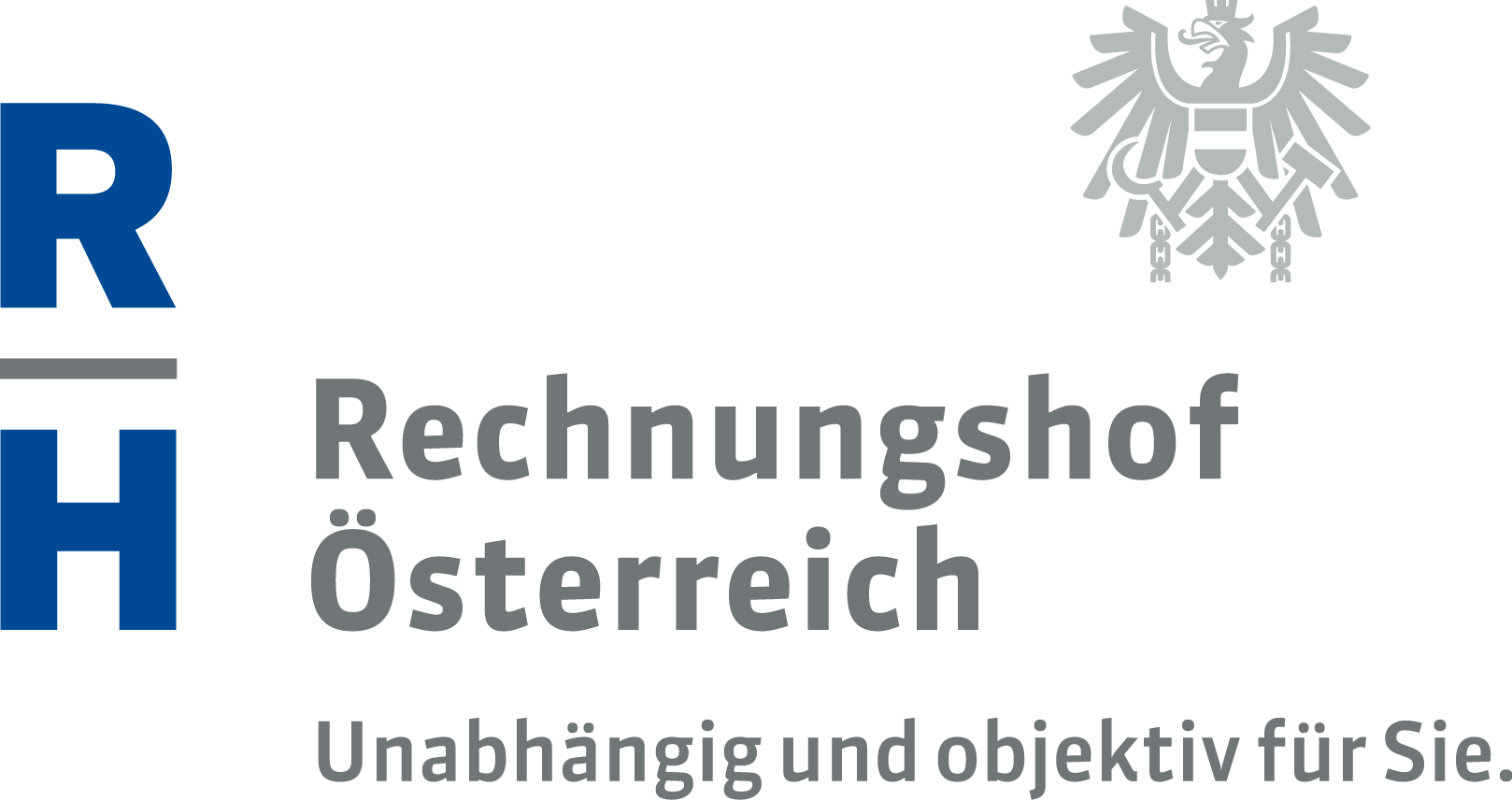Hardship Fund: a calculation model that is both complex and difficult to understand

The Hardship Fund was created to mitigate the negative economic impacts of the COVID-19 pandemic on one-person and family businesses. In its report published today on the "Hardship Fund – Funding Administration", the Austrian Court of Audit (ACA) evaluates the funding administration as well as the legal framework conditions, which were created under considerable time pressure. The auditors reveal the manifold problems in the design of the funding disbursed via the Hardship Fund – in particular as regards the definition of the funding criteria and the calculation of the funding amount. The goal to provide broad financial support across all sectors was met to a large extent.
Uncharted technical territory for the Federal Ministry for Digital and Economic Affairs
The financial resources for the Hardship Fund are derived from the COVID-19 Crisis Management Fund. The latter is administered by the Federal Minister of Finance. The Federal Ministry for Digital and Economic Affairs is responsible for the operational implementation of the Hardship Fund. The Austrian Federal Economic Chamber has been entrusted with the processing of funding applications, which is free of charge.
The Hardship Fund was designed for businesses that could benefit neither from guarantees nor from short-time work schemes. The funds paid out were to cushion the costs of living for entrepreneurs. In contrast to economic promotion, which should encourage a specific behaviour desired from the viewpoint of economic policy, the Hardship Fund has a clear social objective. Consequently, the Federal Ministry for Digital and Economic Affairs had to break new ground in the conception of the funding regulation. This resulted in a high degree of technical improvisation as well as in manifold problems as regards the funding design.
The funding regulation was amended several times
Within seven weeks, three different versions of the funding regulation entered into effect for phase 2 (from mid-April 2020). These specified in particular the group of persons eligible for funding, the funding requirements, the funding amount and the procedure for funding administration. The applicants had to familiarise themselves with several versions of the regulation within a short period of time. The amendments altered the funding requirements significantly. The revised funding regulations and the therefore constantly necessary reinterpretation also implied considerable additional work for the Austrian Federal Economic Chamber, which was entrusted with the processing.
The Federal Ministry of Finance and the Federal Ministry for Digital and Economic Affairs had failed to estimate the costs for processing and control. However, the assumption of costs by the Austrian Federal Economic Chamber could not relieve the two ministries of carrying out a cost estimate to ensure economic efficiency. In addition, the ACA critically notes that no minimum funding amount had been defined at the beginning of phase 2 in order to avoid very low disbursement amounts. Funds already paid out from phase 1 were offset in phase 2. As a result, the amounts paid out until the end of April 2020 were sometimes low, in some cases significantly less than EUR 100.
The ACA recommends to avoid multiple amendments to funding regulations in close chronological succession and their retroactive application as far as possible. In this context, the auditors point to the related efforts with regard to the processing as well as to the need to ensure transparency and legal certainty.
The calculation model is both complex and difficult to understand
In phase 2, the Federal Minister of Finance decided in agreement with the Federal Minister for Digital and Economic Affairs and the Vice-Chancellor to employ a model to compensate for the individual economic damage caused by the loss of earnings of entrepreneurs. This model for calculating the funding amount was complex and difficult to understand. For applicants, the requirements and preparatory work for filling out the online application form increased considerably.
The ACA furthermore highlights the potential for improvement as regards the user-friendliness: data already entered could not be saved temporarily and access to the online application form was limited in time. The auditors also recommended to consider the possibility to log in with the mobile phone signature as another means of identification when submitting applications via photo ID.
Funds were broadly distributed across sectors and disbursed quickly
209,000 beneficiaries submitted about 805,000 funding applications. A total of some EUR 895.91 million in funding was disbursed from the Hardship Fund. The figures refer to the audited period from March to December 2020. In phase 1 (March to mid-April 2020), two per cent of the applications were rejected. In phase 2 – with a cut-off date of 31 December 2020 – the rejection rate was at 14 per cent.
Some 72 per cent of the funding went to entrepreneurs from the sectors of trade and crafts, tourism/gastronomy, other, social services/health care/nursing and trade. Furthermore, entrepreneurs from other sectors, such as consulting, leisure and sports, and transport, benefited as well.
The average completion time for phase 1 was just under one day. As regards phase 2, the Austrian Federal Economic Chamber had disbursed the funds to 95 per cent of the beneficiaries within 19 days of their application by 31 December 2020.
- pdf Datei:
- 4,793.0 KB
- Umfang:
- 138 Seiten
Report: Hardship Fund – Funding Administration (in German)
From June 2020 to March 2021, the ACA carried out an audit of the Hardship Fund at the Federal Ministry of Finance and the Federal Ministry for Digital and Economic Affairs as well as at the Austrian Federal Economic Chamber, which was responsible for processing the funding. The audit aimed at assessing the legal framework conditions and the funding design, the processing of the funding, the quality of the public-sector service provision from the viewpoint of the added value created for citizens and the provision of the financial means. The audited period spanned the months from March through December 2020.


